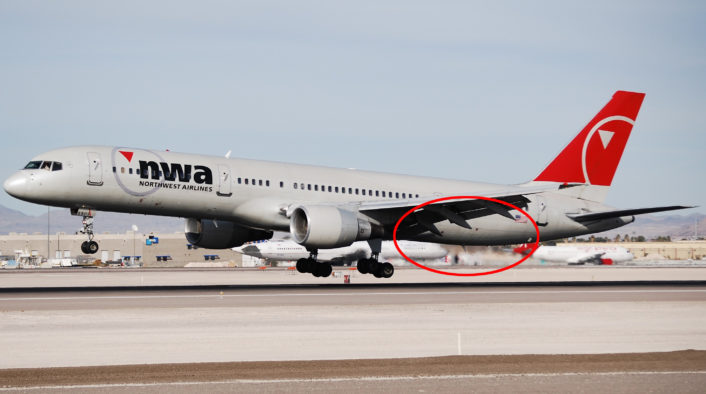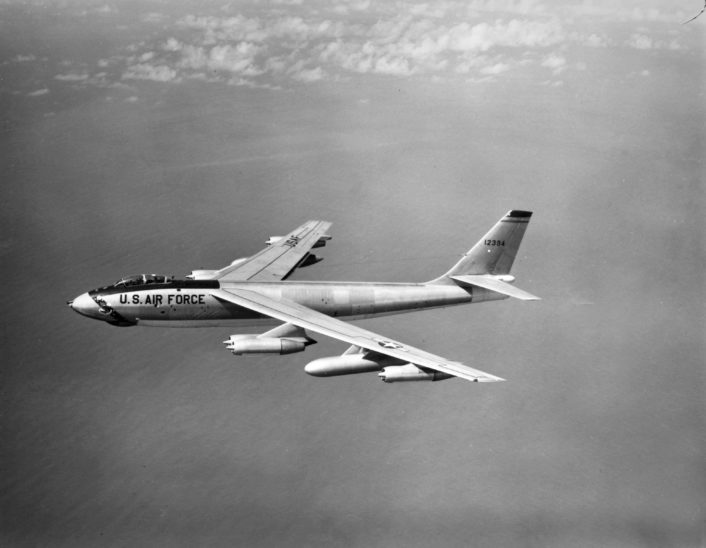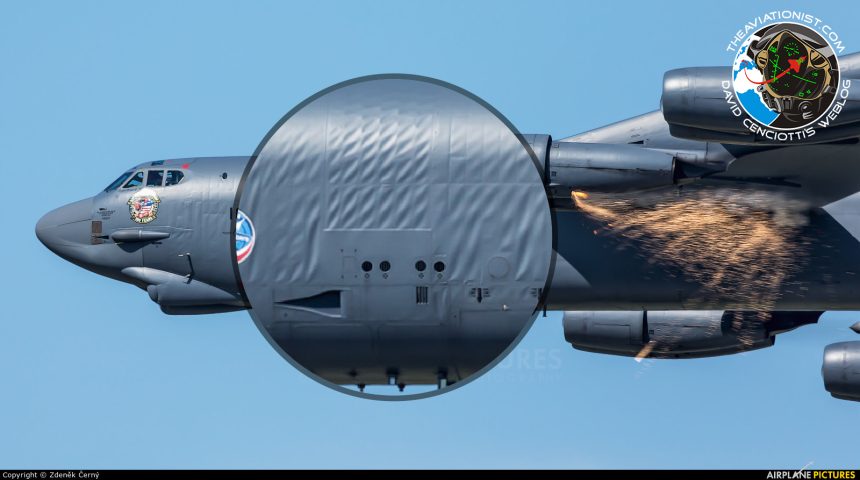Skin buckling is more a structural design feature than a sign of aging.
Last week we published an interesting image captured by aviation photographer Zdenek Cerny on Sept. 18, 2017, as the B-52H Stratofortress bomber 61-0029 belonging to the 2nd Bomb Wing from Barksdale Air Force Base, Louisiana, departed from Ostrava after attending the NATO Days 2017.
The image shows the BUFF (Big Ugly Fat Fellow – as the aircraft is nicknamed in the aviation community) with one of its 8 engines emitting sparks and smoke, most probably because of FOD (Foreign Object Damage) from a birdstrike.
Not only is the photo remarkable because it pictures a rare (not catastrophic) engine mishap, but also because another peculiar feature of the B-52 is clearly visible: the so-called “beauty wrinkles” on the front fuselage of the iconic bomber.
Our readers have noticed these “wrinkles” or “ripples“. Commenting our post on social networks, many have suggested they may have been a sign of the airframes aging. However, they have nothing to do with age of the B-52: they are the visual effect of the aircraft’s skin buckling.
Look at the B-52’s skin buckling clearly visible in this photo. The skin panels between the forward and center fuselage buckle because mechanical forces and flexing of the structure. This is normal and particularly evident on some types of aircraft (including the B757). Cool. https://t.co/mpPwWZ3TDJ
— David Cenciotti (@cencio4) November 12, 2019
Generally speaking every component of an airframe is designed to be thin to reduce the overall weight of the aircraft but, at the same time, every piece, including the “outer skin”, is required to bear load along with the longerons and frames (the main load-bearing components of the airplane structure). This load can be of three types: compression, tension and shear load. When the thin skin panels of the aircraft are under stress, they may buckle and when the light comes from the right angle, such buckling can be apparent, as in the photo we posted last week.
As mentioned, this not only happens on the B-52. There are also civilian airliners designed in such a way buckling is so evident that you can visualize the arrangement of the aluminium skin panels. The Boeing 757 is one of them. The lower side of the rear fuselage of the B757 is an area where “wrinkles” can are visible under certain lighting conditions.

Other military aircraft, such as the A-3 Skywarrior or the B-47 Stratojet, had visible buckles on their skins.

Back to the B-52, the wrinkles are usually visible in the front section of the aircraft between the wings and cockpit: that area “hangs” from the Centre of Lift (where Lift is applied), the thin aluminium skin absorbs part of the load and buckles. The buckling becomes less evident as it is partly relieved, when the fuselage pressurizes.

Needless to say, the age of the airframes and metal fatigue may affect the amount and distribution of the aircraft’s “wrinkles” but, as long as the load and service life do not exceed the design limits, buckling is nothing to be worried about.









